introduction to flight pdf
is a comprehensive guide covering fundamental concepts of aviation, including aerodynamics, flight dynamics, and propulsion․ It provides practical insights and engaging content for students and enthusiasts alike․
is a digital document designed to provide a foundational understanding of the principles, mechanics, and science behind flight․ It serves as a comprehensive guide for individuals seeking to learn about aviation, whether for academic purposes, professional development, or personal interest․ The PDF typically covers essential topics such as the history of flight, aerodynamics, aircraft components, and the forces involved in aviation․ It is often structured to be accessible to newcomers, offering clear explanations and visuals to illustrate complex concepts․ This resource is widely used in educational programs, pilot training, and enthusiasts’ communities, making it a versatile tool for anyone looking to explore the fundamentals of flight․ Its digital format allows for easy access and sharing, making it a popular choice for modern learners․
Importance of Understanding Flight Basics
Understanding the basics of flight is crucial for anyone interested in aviation, as it provides the foundation for grasping more complex concepts․ These fundamentals explain how aircraft generate lift, overcome weight, and sustain motion through thrust while managing drag․ Comprehending these principles is essential for aspiring pilots, engineers, and enthusiasts alike, as it enhances problem-solving skills and decision-making in real-world aviation scenarios․ For students, it builds a strong knowledge base, while for professionals, it refines their expertise․ The basics also foster a deeper appreciation for the science and engineering behind flight, making it easier to engage with advanced topics like aerodynamics and propulsion․ Whether for academic, professional, or personal reasons, mastering these essentials is the first step toward a comprehensive understanding of aviation․

Overview of the Book
serves as an essential guide for anyone seeking to grasp the fundamentals of aviation engineering and technology․
Key Chapters and Topics Covered
is organized into comprehensive chapters that cover essential aspects of aviation․ The book begins with foundational concepts such as the history of flight and the science behind aerodynamics․ Key chapters explore the physics of lift, thrust, drag, and weight, providing detailed explanations of how these forces interact during flight․ The text also delves into advanced topics like propulsion systems, including jet engines and propellers, and their role in generating thrust․ Additionally, the book covers flight dynamics, including stability, control, and navigation systems․ A dedicated section on space flight introduces readers to astronautics, orbital mechanics, and the challenges of space exploration․ Practical aspects such as aircraft design, materials, and performance are also discussed․ The inclusion of real-world examples and case studies enhances the learning experience, making the book a valuable resource for both enthusiasts and professionals in the field of aerospace engineering․
Importance of Aerodynamics in Flight
Aerodynamics is a cornerstone of flight, playing a critical role in understanding how aircraft interact with the atmosphere․ It explains the principles of lift generation, drag reduction, and thrust creation, which are essential for sustained and controlled flight․ By studying aerodynamics, engineers can design more efficient wings, reduce fuel consumption, and improve overall aircraft performance․ The behavior of air as a fluid and its interaction with surfaces is fundamental to predicting how an aircraft will respond under various conditions․ Aerodynamic principles also influence the stability and maneuverability of aircraft, ensuring safe and effective operation․ Without a deep understanding of aerodynamics, advancements in aviation would be severely limited, making it a vital area of study for anyone interested in flight․ Its applications extend beyond traditional aircraft to include helicopters, drones, and even space vehicles, highlighting its universal importance in aerospace engineering․
Flight Dynamics and Propulsion Systems
Flight dynamics and propulsion systems are essential for understanding how aircraft generate the necessary power and control to fly efficiently․ Propulsion systems, such as jet engines and propellers, convert fuel into thrust, overcoming drag and enabling forward motion․ These systems are designed to maximize efficiency while minimizing fuel consumption․ Flight dynamics, on the other hand, involve the study of an aircraft’s motion in three-dimensional space, including its stability, control, and maneuverability․ Key concepts include the six degrees of freedom—pitch, roll, yaw, and translation along the x, y, and z axes․ Control surfaces like ailerons, elevators, and rudders play a crucial role in maintaining stability and directional control․ Together, propulsion and dynamics ensure an aircraft can achieve and sustain controlled, efficient flight under various conditions․ This section provides a foundational understanding of these systems, which are vital for both aircraft design and pilot training․
Space Flight and Astronautics Basics
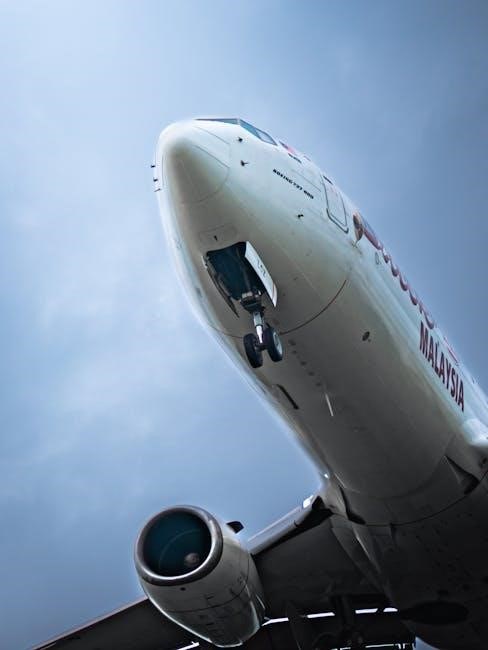
Space flight and astronautics basics introduce the principles behind escaping Earth’s atmosphere and traveling through space․ This section covers the fundamental physics of rocket propulsion, including the rocket equation and the energy required to achieve orbit or escape velocity․ It also explores orbital mechanics, such as Kepler’s laws, which govern the motion of celestial bodies and spacecraft․ The challenges of space travel, like weightlessness, radiation exposure, and extreme temperatures, are discussed in detail․ Additionally, the design of spacecraft, including heat shields, life support systems, and communication equipment, is explained․ The section also touches on the differences between manned and unmanned missions, highlighting their unique objectives and requirements․ By understanding these basics, readers gain insight into the complexities of space exploration and the advancements that have made it possible․ This section serves as a foundational bridge between aviation and space-related topics․
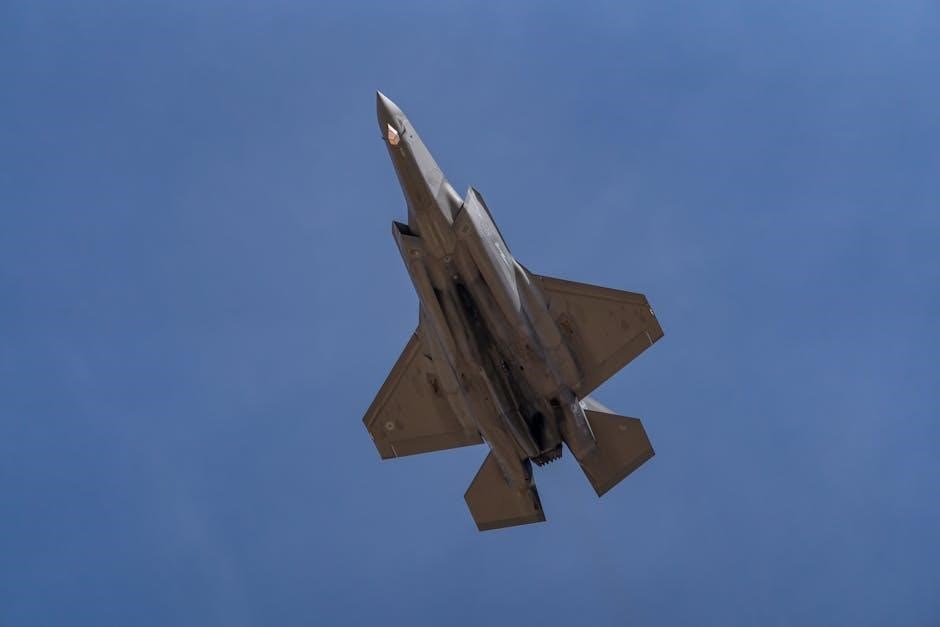
Forces Involved in Flight
The forces involved in flight are lift, thrust, drag, and weight․ Lift counteracts weight, while thrust overcomes drag to achieve motion and sustain flight․
Lift, Thrust, Drag, and Weight
Lift, thrust, drag, and weight are the fundamental forces involved in flight․ Lift is the upward force created by air moving over the wings, countering the weight of the aircraft․ Thrust is the forward force produced by engines or propellers, overcoming drag․ Drag is the resistance an aircraft encounters as it moves through the air․ Weight is the combined force of gravity acting on the aircraft’s mass․ These forces must be in balance for steady, level flight: lift equals weight, and thrust equals drag․ Understanding how these forces interact is crucial for aircraft design, performance, and pilot control․ They form the basis of aerodynamics and are essential for achieving and sustaining flight․ The relationship between these forces is described by fundamental equations, such as lift (L = ½ρv²S), thrust (F = ma), and drag (D = ½ρv²CdS)․ Balancing these forces ensures efficient and safe flight operations․
Bernoulli’s Principle and Its Role
Bernoulli’s Principle plays a pivotal role in understanding the aerodynamics of flight․ It states that the pressure of a fluid (in this case, air) decreases as its velocity increases․ This principle is fundamental to explaining how lift is generated by an aircraft’s wings․ The curved upper surface of an airfoil forces air to move faster over the top compared to the flatter bottom surface, creating a pressure difference․ The lower pressure above the wing and higher pressure below result in an upward force, which is lift․ While Bernoulli’s Principle is often simplified, it remains a cornerstone of aerodynamic theory․ However, it is important to note that lift is also influenced by other factors, such as the angle of attack and the movement of air over the wing․ Together, these elements create the conditions necessary for an aircraft to ascend and sustain flight efficiently․
How These Forces Interact During Flight
The forces of lift, thrust, drag, and weight interact dynamically during flight to maintain equilibrium and control․ Lift, generated by the wings, opposes weight, while thrust, produced by engines or propellers, counteracts drag․ During takeoff, thrust must overcome drag, and lift must exceed weight for the aircraft to ascend․ In steady, level flight, these forces balance perfectly, with lift equaling weight and thrust equaling drag․ When descending, pilots reduce thrust and lift, allowing drag and weight to dominate․ The interaction of these forces is crucial for maintaining altitude, speed, and direction․ Pilots adjust engine power and control surfaces to manage these forces, ensuring smooth and efficient flight․ Understanding how these forces interact is essential for mastering flight dynamics and achieving safe, controlled aerial movement․ This balance is the foundation of all aviation, from small aircraft to commercial airliners․
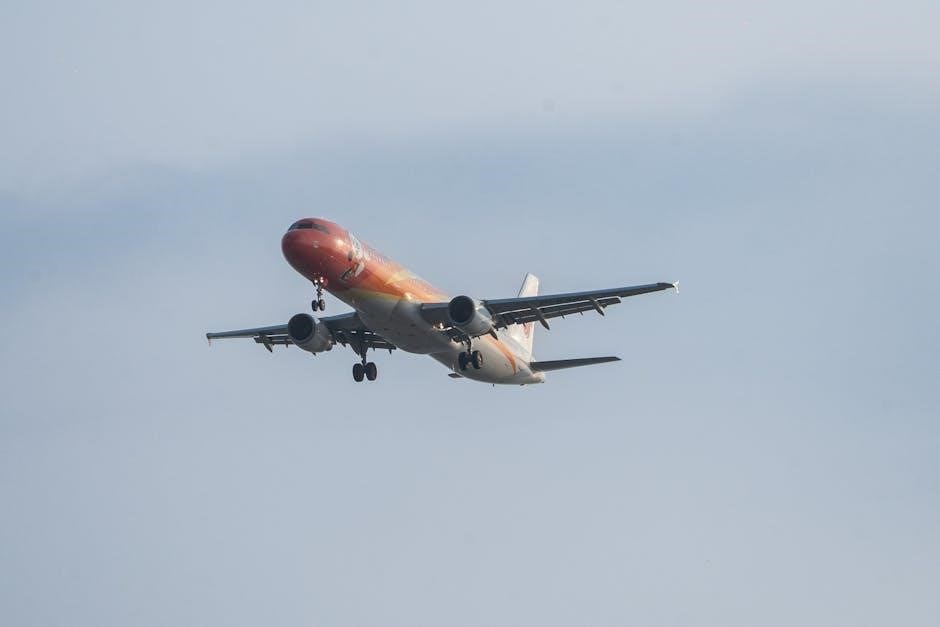
Types of Introductory Flight Experiences
Introductory flights offer hands-on aviation experiences, including trial lessons with instructors, cockpit simulations, and short-duration flights․ These experiences cater to enthusiasts and aspiring pilots, providing a taste of real-world flying․
Trial Flight Lessons with Instructors
Trial flight lessons with instructors are a popular way to experience aviation firsthand․ These sessions are typically short, lasting between 30 minutes to an hour, and are designed for beginners․ Certified flight instructors guide participants through the basics of flying, starting with a pre-flight briefing․ This includes understanding aircraft controls, safety procedures, and communication techniques․ During the flight, instructors allow students to handle the controls under close supervision, providing real-time feedback and guidance․ These lessons are both educational and exhilarating, offering a hands-on introduction to the fundamentals of flight․ They are ideal for those curious about aviation or considering a career as a pilot․ Many flight schools offer trial lessons as a teaser to their full training programs, often including a debrief and takeaway materials to reinforce learning․ These experiences are also a great way to overcome initial fears and build confidence in the cockpit․
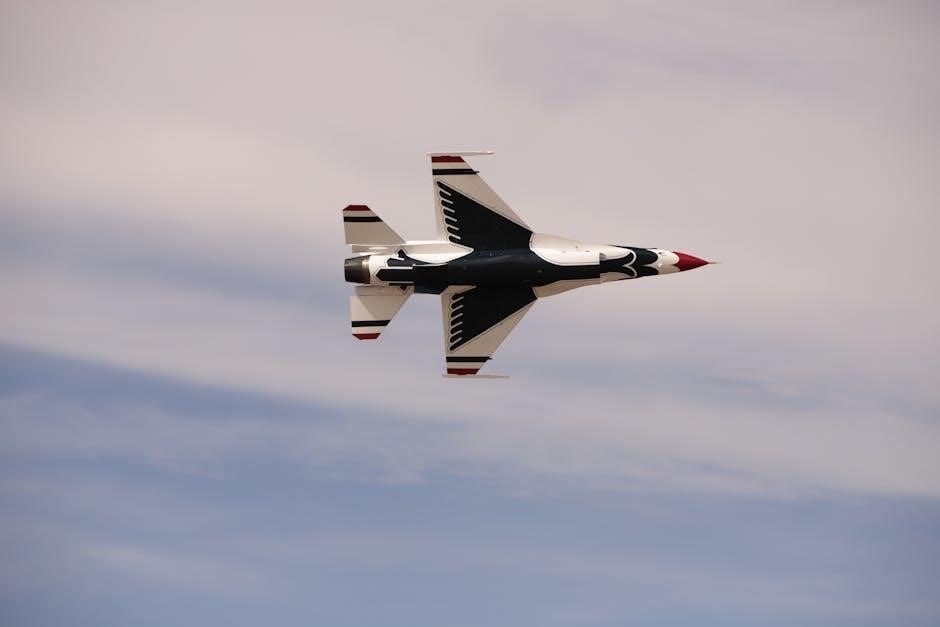
Hands-On Experience in the Cockpit
A hands-on experience in the cockpit provides learners with direct engagement with aircraft controls and systems․ Under the guidance of certified instructors, participants gain practical insights into the operation of an airplane․ This includes familiarization with primary flight instruments, navigation systems, and communication devices․ The experience often begins with a pre-flight inspection and startup procedures, followed by taxiing and takeoff․ Learners are encouraged to manipulate the controls, feeling the aircraft respond to their inputs․ This tactile learning enhances understanding of aerodynamic principles and flight mechanics․ The cockpit environment also introduces the importance of situational awareness, decision-making, and teamwork․ Many programs allow participants to log flight time, which can be valuable for those pursuing a pilot’s license․ The combination of instruction and active participation creates a immersive learning atmosphere, making complex concepts more accessible and engaging․ This hands-on approach is a cornerstone of effective flight training and education․
Duration and Cost of Introductory Flights
Introductory flights vary in duration, typically ranging from 30 minutes to several hours, depending on the program and aircraft type․ The cost is influenced by factors such as location, aircraft model, and instructor expertise․ On average, a 30-minute trial flight can cost between $100 and $300, while longer sessions may range from $200 to $600 or more․ Some flight schools offer discounted introductory packages for first-time flyers․ Additional costs may include fuel surcharges, landing fees, or equipment rentals․ Many providers offer flexible scheduling to accommodate different budgets and preferences․ It’s important to research and compare options to find a flight experience that aligns with your financial situation․ Booking in advance can also help secure better rates․ Overall, the duration and cost of introductory flights are designed to provide a balanced and affordable entry into the world of aviation․
Educational Resources for Learning Flight
Explore textbooks, online courses, and simulation tools for comprehensive flight education․ These resources provide foundational knowledge, practical skills, and real-world applications for aspiring pilots and enthusiasts․
Textbooks and Online Courses
by John D․ Anderson provide detailed explanations of aerodynamics, propulsion, and flight mechanics․ These books are often accompanied by online resources, such as interactive diagrams and practice problems, to enhance understanding․ Online courses, available on platforms like Coursera and edX, offer structured learning experiences․ They cover topics ranging from basic aviation principles to advanced aerodynamics, often featuring video lectures, quizzes, and forums for discussion․ Many courses are designed for beginners, making complex concepts accessible․ Additionally, some programs include simulation tools, allowing students to apply theoretical knowledge in virtual environments․ These resources are ideal for self-paced learning and provide a solid foundation for those pursuing careers in aviation or simply exploring their interest in flight․
Simulation Tools for Flight Training
Simulation tools play a crucial role in flight training by providing realistic and immersive learning environments․ These tools allow aspiring pilots to practice maneuvers, navigate through various weather conditions, and familiarize themselves with cockpit controls without the risks associated with real-world flights․ Desktop flight simulators, such as Microsoft Flight Simulator and X-Plane, are popular choices for beginners․ They offer detailed aircraft models, realistic physics, and scenic landscapes, making the learning experience engaging․ Professional flight simulation software, like those used in aviation schools, often includes advanced features such as motion platforms and virtual reality integration․ These tools help trainees develop muscle memory and decision-making skills․ Additionally, simulations enable instructors to create custom scenarios to test students’ abilities in emergency situations․ By combining theoretical knowledge with hands-on practice, simulation tools bridge the gap between classroom learning and actual flight experiences, making them indispensable in modern aviation education․
Flight Planning Tools and Software
Flight planning tools and software are essential for organizing and executing safe and efficient flights․ These tools help pilots and aviation professionals plan routes, calculate fuel requirements, and ensure compliance with aviation regulations․ Popular platforms like ForeFlight, Garmin Pilot, and Jeppesen FliteDeck provide detailed maps, weather forecasts, and air traffic data․ They also allow users to file flight plans directly with air traffic control․ Additionally, these tools often include features for weight and balance calculations, performance analysis, and navigation aids․ Many modern systems integrate real-time data, enabling pilots to adapt to changing conditions during flight․ These resources are invaluable for both recreational and commercial pilots, ensuring flights are well-prepared and executed safely․ By streamlining the planning process, they reduce the workload on pilots, allowing them to focus on other critical aspects of aviation․ Regular updates and advancements in technology make these tools indispensable in the aviation industry․

Flight Lesson Plans for Students
Structured educational programs designed to teach students the basics of aviation and practical flight applications․ Includes exercises, case studies, and simulation tools to enhance learning and safety awareness․
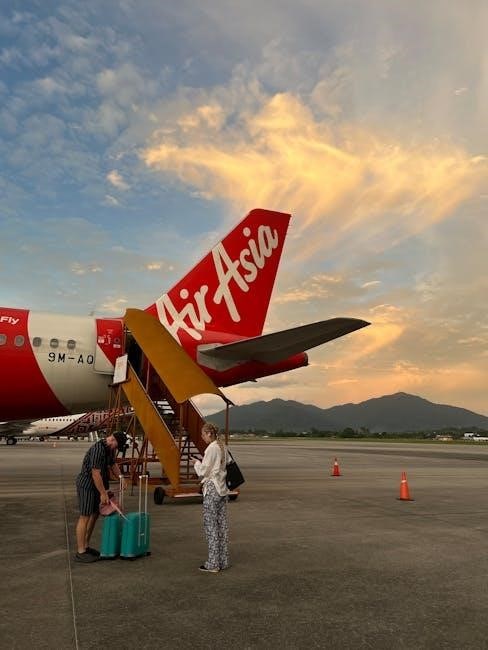
Basic Lesson Structure for Beginners
A well-organized lesson plan is essential for introducing students to the fundamentals of flight․ Begin with an introduction to the basic principles, such as the four forces of flight, aircraft components, and control surfaces․ Allocate time for theoretical explanations, visual aids, and interactive simulations to enhance understanding․ Practical exercises, such as pre-flight checks and basic cockpit familiarization, should follow to apply the concepts learned․ Each lesson should include a safety briefing and conclude with a review of key points․ Ensure the content is tailored to the skill level of the students, gradually increasing complexity as they progress․ Incorporate feedback and assessment tools to monitor progress and adapt the lesson plan accordingly․ This structured approach ensures a comprehensive and engaging learning experience for newcomers to aviation․

Activities to Engage Students in Flight
To keep students engaged, incorporate hands-on and interactive activities into flight lessons․ Flight simulation software is an excellent tool, allowing students to practice flying in a controlled environment․ Model aircraft building and testing can help students understand aerodynamic principles․ Organize field trips to airports or aviation museums to provide real-world exposure․ Group projects, such as designing and presenting a simple aircraft, encourage teamwork and creativity․ Include virtual reality experiences to simulate flight scenarios․ Interactive quizzes and gamified challenges can reinforce theoretical concepts․ Encourage students to participate in drone flying workshops to apply their knowledge practically․ These activities not only make learning enjoyable but also deepen their understanding of flight mechanics and aviation principles․ By combining theory with practice, students stay motivated and develop a stronger connection to the subject․
Safety Procedures and Pre-Flight Checks
Safety procedures and pre-flight checks are critical to ensuring a secure and successful flight experience․ Before every flight, pilots must conduct a thorough inspection of the aircraft, checking for damage, proper fluid levels, and functioning controls․ Weather conditions, air traffic, and navigation systems must also be reviewed․ A pre-flight briefing is essential to outline emergency procedures and communication protocols․ Students should be taught to follow a standardized checklist to avoid oversights․ Instructors should emphasize the importance of wearing safety gear, such as seatbelts and headsets․ Emergency exit locations and procedures should be clearly explained․ Regular safety drills and simulations can prepare students for unexpected situations․ By prioritizing these steps, students develop a strong foundation in aviation safety, reducing risks and building confidence in their flying abilities․ Consistent adherence to these protocols ensures a safe learning environment for all․
Practical Information for Booking Flights
Essential details for scheduling, costs, and policies ensure informed decisions and smooth experiences when arranging flights․
Scheduling and Weight Restrictions
Scheduling and weight restrictions are crucial considerations when booking flights․ Understanding availability, peak times, and booking windows ensures smooth planning․ Weight limits vary by aircraft type and provider, impacting baggage and passenger capacity․ Adhering to these guidelines prevents delays and ensures safety․ Proper scheduling avoids conflicts, while weight compliance maintains flight efficiency․ These factors are essential for a seamless experience, especially for introductory flights․ Always check with providers for specific requirements to avoid issues․ Proper planning and adherence to guidelines enhance safety and efficiency, making the flight experience enjoyable and stress-free for all participants․ These practical details are vital for a successful and hassle-free introduction to flight․
Age and Safety Requirements
Age and safety requirements are essential for ensuring a secure and legal flight experience․ Most introductory flight programs require participants to be at least 15 years old, though some organizations may allow younger individuals with parental consent․ Safety protocols are strictly enforced, including the use of approved safety gear and adherence to pre-flight briefings․ Medical fitness is also a critical factor, with some programs requiring a medical certificate for participation․ Additionally, instructors typically accompany minors during flights to ensure compliance with safety standards․ These guidelines help minimize risks and provide a safe environment for learning․ Always verify the specific age and safety requirements with your flight provider to ensure eligibility and compliance․ These measures are designed to protect participants and ensure a smooth, enjoyable introduction to flight․
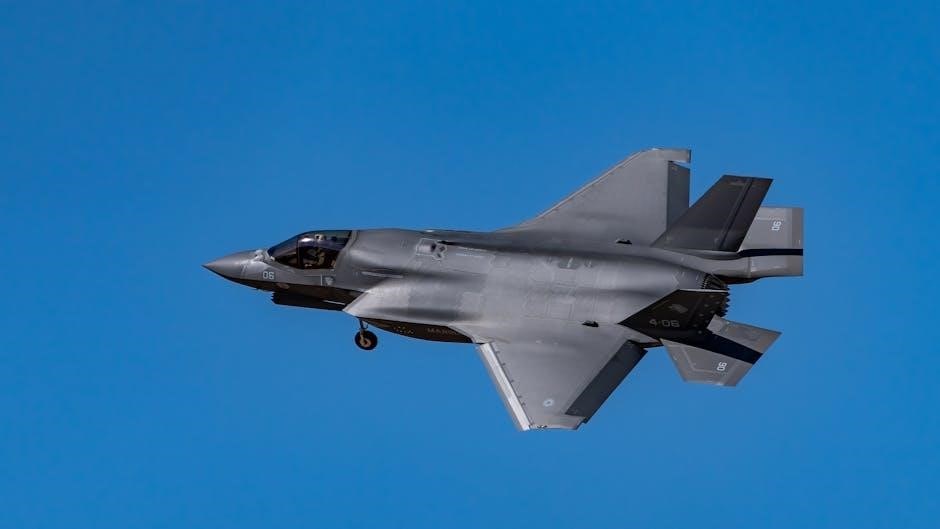
Cancellation and Refund Policies
Understanding cancellation and refund policies is crucial when booking introductory flight experiences․ Most flight schools and providers have specific terms regarding cancellations, often requiring a minimum notice period, typically 24 to 48 hours, to avoid penalties․ Refunds may be partial or full, depending on the circumstances and timing of the cancellation․ Some providers offer rescheduling options instead of refunds, while others may charge a fee for changes․ Weather-related cancellations are usually exempt from penalties, with flights rescheduled at no additional cost․ It’s important to review the policy before booking to understand your rights and obligations․ Additionally, some programs may require a deposit, which could be non-refundable in certain cases․ Always clarify these details with your provider to avoid misunderstandings․ Transparent policies ensure a fair and customer-friendly experience for all participants․
